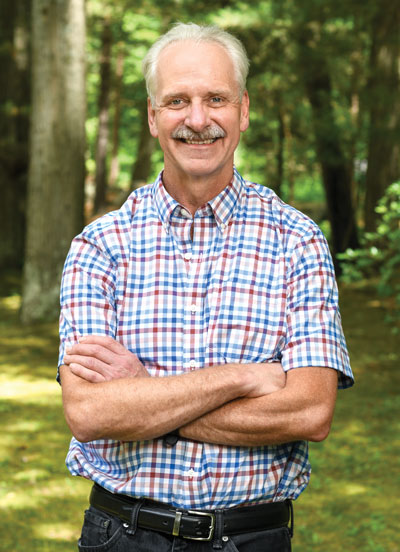 Michael Cramer is a seasoned runner, but in December 2017 he crossed the finish line of a 5K race and experienced cardiac arrest: his heart stopped beating, putting him at risk for serious damage to his heart and his brain. The race had been relatively easy, certainly compared with the marathons the Waltham resident had run in the past. Fortunately, there was an ambulance parked nearby, and a defibrillator was used to establish a pulse. After recovering from heart surgery, Mr. Cramer, 58, a software engineer with Boston Scientific, joined the cardiac rehabilitation program at Emerson.
Michael Cramer is a seasoned runner, but in December 2017 he crossed the finish line of a 5K race and experienced cardiac arrest: his heart stopped beating, putting him at risk for serious damage to his heart and his brain. The race had been relatively easy, certainly compared with the marathons the Waltham resident had run in the past. Fortunately, there was an ambulance parked nearby, and a defibrillator was used to establish a pulse. After recovering from heart surgery, Mr. Cramer, 58, a software engineer with Boston Scientific, joined the cardiac rehabilitation program at Emerson.
I’ve been an athlete my entire life. I’ve run for years and raced bikes for ten years. About eight years ago, I experienced chest pain when I was training for a marathon. I had a stress echocardiogram performed, and there didn’t appear to be any blockages in my coronary arteries. Then I suffered a series of leg injuries, and I never got back to running those 17-mile runs.
My goal for the Cambridge Winter Classic that December was to finish the race. I continued to have some leg problems, so I ran slowly, and I felt fine. When I finished, I remember talking with a few people, walking over to get a drink, and the next thing I saw was tunnel vision. I was told later it was my optic nerve running out of oxygen.
Someone told me I had a heart attack, and they were loading me into the ambulance. They had used the defibrillator on me a couple of times, and my heart resumed a normal beat. I was extraordinarily lucky. The defibrillator had been just 100 feet away when I went into cardiac arrest.
I wasn’t sure what had happened — I was confused — but before we drove away, I remember getting a round of applause from the crowd, which I really appreciated, and I gave them a fist up reply.
The ambulance took me to Massachusetts General Hospital, where cardiac catheterization determined I had five blockages; one coronary artery was 100 percent blocked. Additional blood vessels had developed around the blockages, which often happens. The theory is that this process began eight years ago, when I initially felt chest pain.
I’d never heard of cardiac rehab, but my cardiologist wanted me to attend. I started going to Emerson’s cardiac rehab program twice a week. At that point — February — I had begun exercising myself, jogging two miles, doing a half-mile and then walking, then a half-mile, etc. There is no question I felt confident exercising in that setting at Emerson, with Molly Kim, my exercise physiologist, always nearby.
It certainly helped my wife, who had the most difficult job throughout the whole episode, even though the heart surgery had returned me to good health. In some ways, Molly’s job was to hold me back; exercise is such a big part of who I am. She also reinforced many of the things I was already doing right.
I was impressed with the entire cardiac rehab staff, including Kathy Donahue, RN, and Julia Elliott, RD, dietitian, who provided me with a good deal of information. She counseled me to change my diet. Although my cholesterol is under good control, I learned that I am particularly sensitive to a certain level of sugar in my bloodstream. So I am back on the diet I followed when I was racing bikes and had to keep my weight very low.
In addition, the cardiac rehab staff hold meditation sessions, so I learned to meditate as a way to control stress. I’m not great at it yet, but it was awesome doing it with the group. It’s a work in progress for me. I need to integrate it into my schedule.
In May, my cardiologist cleared me to go on a 700-mile biking trip in France and Italy that my wife and I planned last year. We cycled up Mount Ventoux, a 5,000-foot mountain in France. I felt great.
In June 2018, I participated in Emerson’s 5K Run~Walk for Cancer, running with Ginny Dow, who directs the cardiac rehab program. That really felt good.
For more information on Emerson’s cardiac rehabilitation program, please call 978-287-3732.

